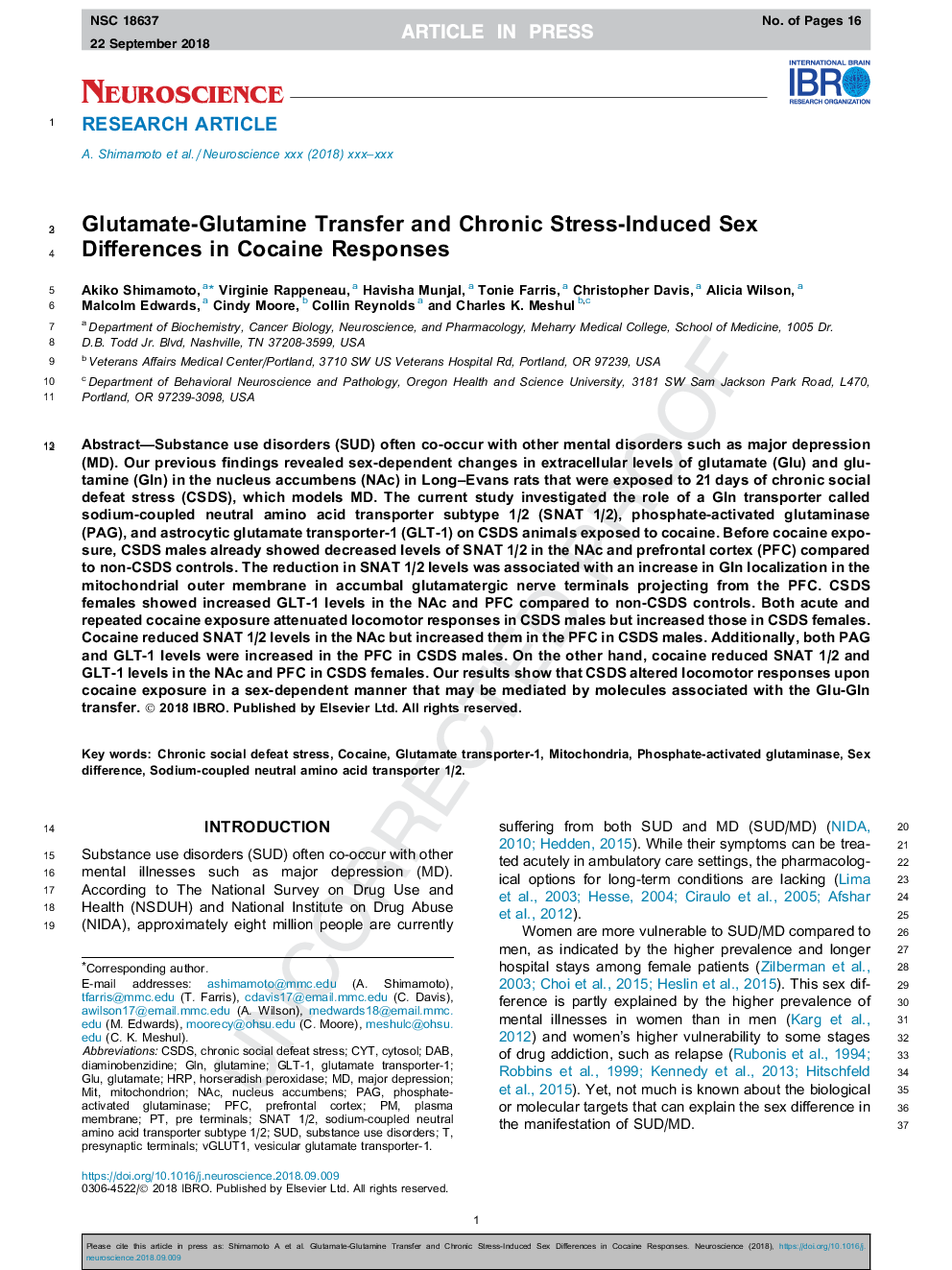| Article ID | Journal | Published Year | Pages | File Type |
|---|---|---|---|---|
| 11025219 | Neuroscience | 2018 | 16 Pages |
Abstract
Substance use disorders (SUD) often co-occur with other mental disorders such as major depression (MD). Our previous findings revealed sex-dependent changes in extracellular levels of glutamate (Glu) and glutamine (Gln) in the nucleus accumbens (NAc) in Long-Evans rats that were exposed to 21â¯days of chronic social defeat stress (CSDS), which models MD. The current study investigated the role of a Gln transporter called sodium-coupled neutral amino acid transporter subtype 1/2 (SNAT 1/2), phosphate-activated glutaminase (PAG), and astrocytic glutamate transporter-1 (GLT-1) on CSDS animals exposed to cocaine. Before cocaine exposure, CSDS males already showed decreased levels of SNAT 1/2 in the NAc and prefrontal cortex (PFC) compared to non-CSDS controls. The reduction in SNAT 1/2 levels was associated with an increase in Gln localization in the mitochondrial outer membrane in accumbal glutamatergic nerve terminals projecting from the PFC. CSDS females showed increased GLT-1 levels in the NAc and PFC compared to non-CSDS controls. Both acute and repeated cocaine exposure attenuated locomotor responses in CSDS males but increased those in CSDS females. Cocaine reduced SNAT 1/2 levels in the NAc but increased them in the PFC in CSDS males. Additionally, both PAG and GLT-1 levels were increased in the PFC in CSDS males. On the other hand, cocaine reduced SNAT 1/2 and GLT-1 levels in the NAc and PFC in CSDS females. Our results show that CSDS altered locomotor responses upon cocaine exposure in a sex-dependent manner that may be mediated by molecules associated with the Glu-Gln transfer.
Keywords
GLT-1DABGLNPFCCSDSVGLUT1NACHRPPAGSubstance use disorderschronic social defeat stressMajor depressionmitSex differenceSUDdiaminobenzidinecytCytosolPlasma membraneprefrontal cortexMitochondriaMitochondrionNucleus accumbensPresynaptic terminalsHorseradish peroxidaseCocaineGluglutamateglutamate transporter-1glutaminephosphate-activated glutaminase
Related Topics
Life Sciences
Neuroscience
Neuroscience (General)
Authors
Akiko Shimamoto, Virginie Rappeneau, Havisha Munjal, Tonie Farris, Christopher Davis, Alicia Wilson, Malcolm Edwards, Cindy Moore, Collin Reynolds, Charles K. Meshul,
